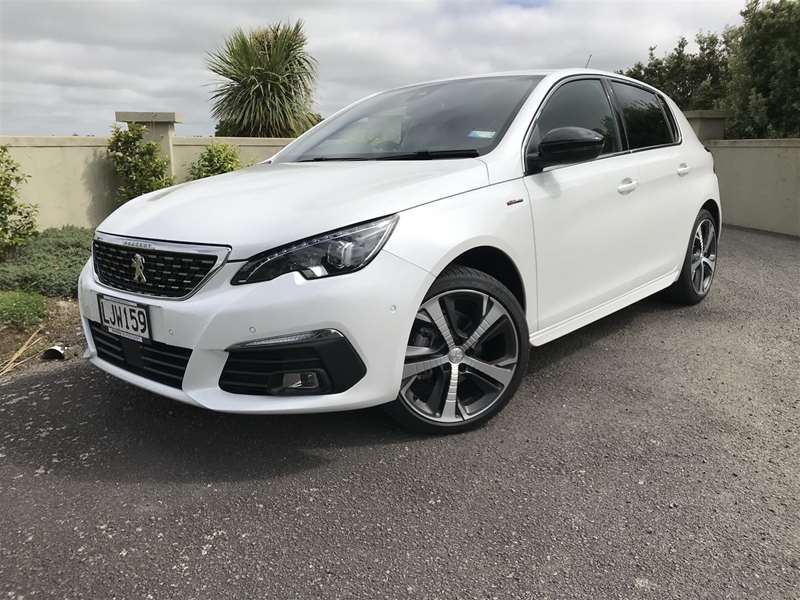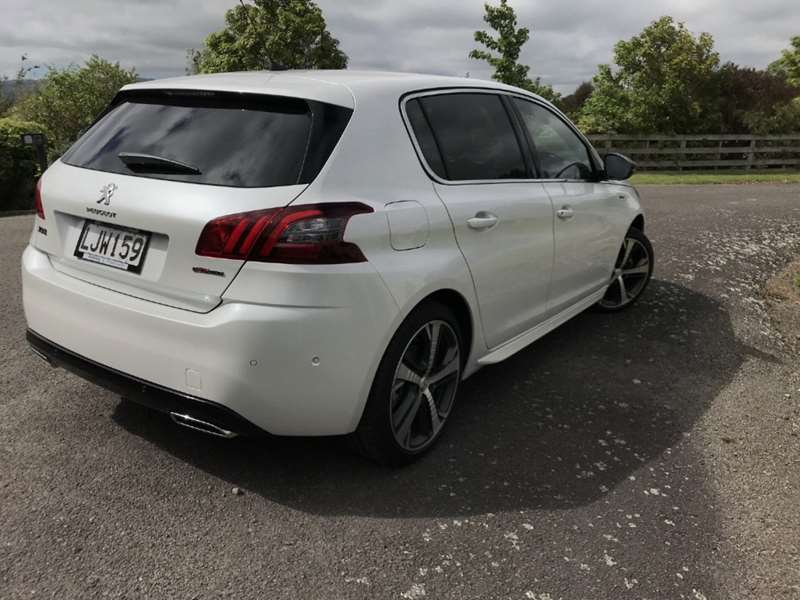Having just undergone a second refresh, the Peugeot 308 looks and feels good to go, writes Richard Bosselman.
With most cars, production year five is a twilight, a period from which point conjecture about retirement options rise.
Not so for Peugeot’s 308; this compact hatch looks and feels good to go.
An intriguing car, the 308 is designed to match or better mainly German products that, Volkswagen Golf aside, don’t achieve mainstream penetration here, and it finds itself price-matched in New Zealand against a plethora of Japanese and Korean products that tend to hold greater public interest.
Oui, it’s stereotypical to suggest a French car will also come with extra charisma, yet fact is that Peugeot parent PSA has a proven record for dishing up something with extra flair.
In saying that, part of the enduring appeal might surely be obvious resistance to succumbing utterly to flamboyance. PSA need not go that far with Peugeot product because it also has Citroen, for which kooky — or, at least, confrontational — is de rigeur.
The overall 308 shape, then, is an example of neatly restrained chic; at kerbside, it passes off as being handsome in an almost understated way.
The interior is a different story, simply because of the i-Cockpit layout, which delivers a go-kart style driving position, with its small diameter, chunky rimmed steering wheel set so low you must view the instruments over the top of the rim. As a tall person, I have always found it a bit awkward. My wife, who is altogether of different dimension, continues to insist she doesn’t mind.
The 2019 car delivers interesting visual change, courtesy of a new vertical grille, different bumpers, new front and rear lights, and LED daytime running lights. The GT Line on test also implements some styling nuances previously restricted to the GTi.
In addition to being a styling revisit, the 308 also meets updated European efficiency requirements with a three-cylinder 1.2-litre turbo petrol. Though this seems a relatively meagre displacement, don’t be fooled. The engine is a highlight. Vivacious and feisty, it has enough free-revving pugnacious effervescence to remind how far turbocharged petrol engine technology has come.
Sure, the 0-100kmh time of 9.1sec is not racer quick. But speed isn’t everything, right? And even though it is not the quickest there’s plenty of grunt for a lightweight hatch. Certainly enough to stand comparison to immediate rivals. The engine is married to a six-speed automatic gearbox that is sourced from Japan, and is up to mark, save for some hesitancy with off-the-line acceleration, which can frustrate if you’re attempting to accelerate with haste.
On that issue, there’s also the start-stop function. I’m fully aware of the fuel-saving and environmental merits yet, honestly, you’ll want to deactivate it. It’s overly eager and will switch the engine off if the car is paused just a moment — like when you’re in the middle of an intersection waiting for a gap in the traffic to turn right.
For all its pluck, the crux to how the GT Line will impress has a lot to do with how well it can carry the performance it has to give through bends. It’s all about agility.
Fortunately, an impressively keen chassis is also part of the 308’s make-up. So even though the plush ride means it is not really a sporty car, it is entertaining enough, offering decent mid-corner composure and acceptable body control. The Drivesouth test car stepped away from the standard 17-inch wheel set for an 18-inch tyre option that provides slightly lower profile rubber. This doubtless sharpens its grip, and didn’t seem too detrimental to the ride — it’s only on the worst lumps and bumps that the suspension struggles — though potentially it might also have been responsible for elevating the coarse chip roar; a bugbear of low-profile Euro rubber.
The steering, unfortunately, takes the shine off things. It’s very responsive around the straight-ahead, and the small steering wheel gives the rack the impression of being quite quick, but the electric assistance leaves it devoid of feel.
The GT Line only asks $3000 more than you’ll pay for a 308 Allure, an easy premium to swallow, given it provisions a GT kit of side skirts, twin pipe exhaust, larger alloys, sports seats, red interior stitching and some smart aluminium pedals, plus a fancier navigation system, full LED headlights and a different grille and front bumper.
Safety levels on the updated 308 are boosted with some new driver assistance systems taken from the 3008 SUV. These include automatic emergency braking, lane departure warning, blind spot monitoring, tiredness detection and auto headlight dipping. There’s also self-parking into parallel and bay openings along with dual zone air, front and rear parking sensors, and a rear view camera.
Peugeot is trying to move its cars upmarket, and so the 308 cabin feels premium inside compared to some other similarly priced competitors. The sculpted dashboard has an architectural quality to it, dimpled soft-touch plastics extend consistently across all upper door trims and the matte-silver trim adds class.
There’s a new touch-screen infotainment system with full smartphone connectivity for both Apple and Android and there are better graphics and more functions than before. Yet while the clean, uncluttered design makes it look quite sophisticated, the shortage of buttons and knobs does little for the car’s ergonomics. It would be nicer to at least have climate controls at the touch of a button rather than as part of the digital menu. The set-up as can be quite distracting when driving and, like the counter-rotating tachometer, a bit unnecessary.
The space allocation favours front seat space. There’s not a lot of room in the back and any adults relegated to sit there might find less comfort than some other small hatches provide.
It’s also light for in-cabin storage space. You’ll fight over who gets the single cupholder up front, the door cards are narrow and the storage area with the hole in it under the dash is just awkward. But boot space is good, with 425 litres capacity.
Overall, though, it’s better space-wise than the latest Corolla, which sacrifices a lot of rear room, for passengers and luggage, in pursuit of sharp style.
Then there’s the pricing, which is more likely to raise smiles than a Gallic shrug. It’s still not the cheapest choice at $38,990, but another round of sticker revision has done enough good to undermine thinking that it should shoulder a premium — as Champagne and perfume does — simply because it’s French.
For all that, it has a slightly expensive ambience that does no harm and certainly is more special in its driving behaviour than some.










